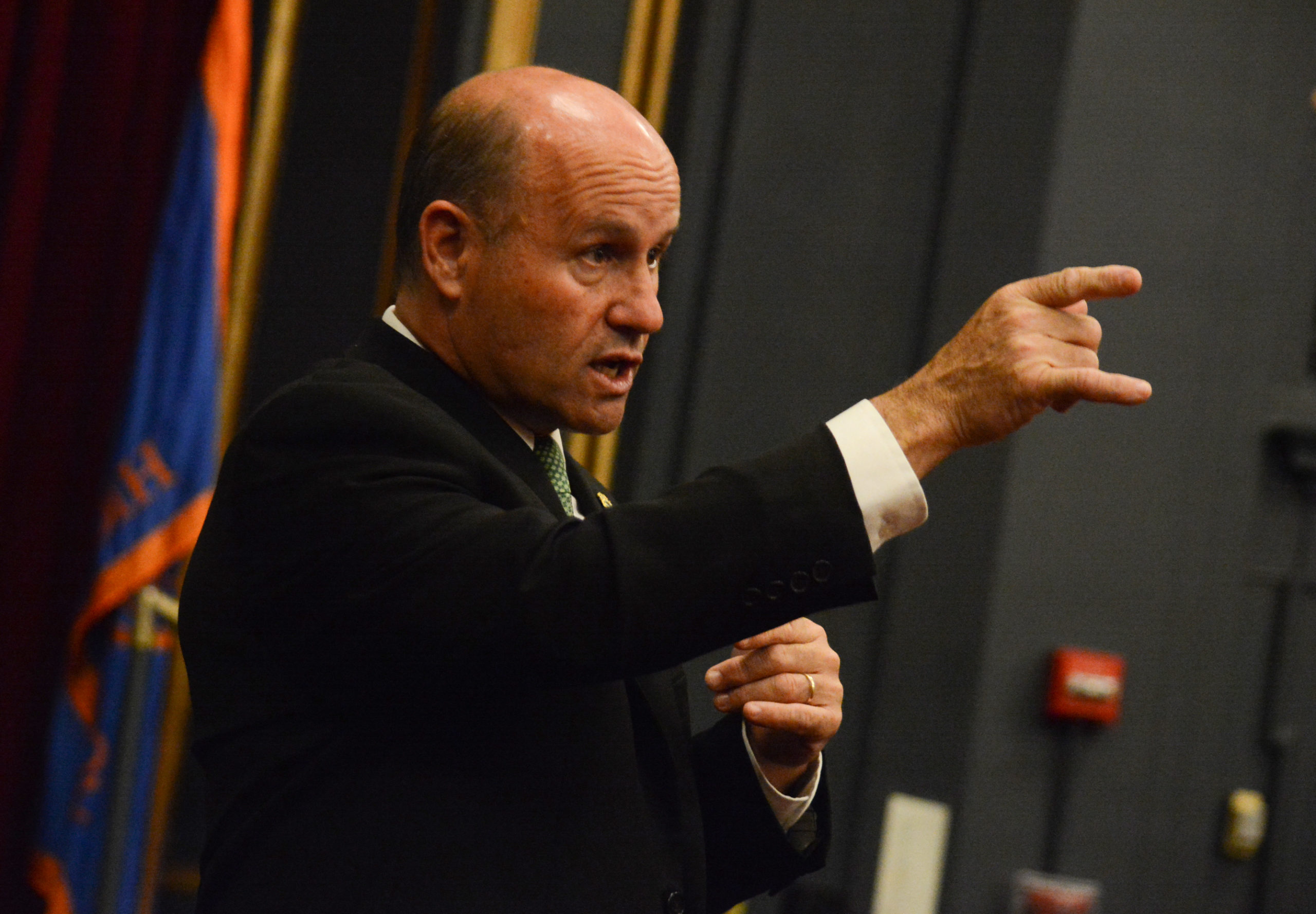Nassau County Police Commissioner Patrick Ryder visited Great Neck North High School to discuss preparedness and safety issues last week, including opiates and school shootings.
Ryder said last Tuesday that overall Nassau County is “going in the right direction,” with shootings, burglaries and violent crime all dropping. Now school safety and opiates are among the top priorities, he said.
While the chances of dying in a school shooting are rare, or about one in 614 million on any given day, according to Ryder, there is always a chance of experiencing one.
“It’s no longer a question of if it will happen, it’s a question of when it happens,” Ryder told an auditorium of parents, teachers and a handful of students. “We prepare for the worst, we pray for the best. But what you all have to understand is that proper preparation is what’s going to save lives.”
Some of those preparation efforts have included training hundreds of principals, police officers and even superintendents how to slow down a school shooter by lockdowns and other methods.
“Saves time, saves lives,” Ryder said.
Ryder also advocated for the “Rave Guardian” app, which he said can get through the dispatcher and expedite the police response – which can be three to five minutes for emergency calls.
Many more deaths have come from opiates in Nassau County, including heroin, according to Ryder. Seven hundred fifty-five young people were treated with Narcan within the county last year for drug overdoses, Ryder said, and 199 died.
Many of these deaths were clustered in Massapequa and surrounding areas, Ryder said – as the No. 1 users of heroin are 18-to-25-year-old white males.
But nobody is immune.
“The idea is ‘not my kid, not my child, not my problem,’” Ryder said of some communities that have had sparse attendance at town hall meetings on deaths from opiates. “Yes, your kid, yes, your child, yes, your problem. You’ve got to think that way – you have to think that way if we’re going to fix this problem.”
The Nassau County Police Department has a five-pronged program of education, awareness, enforcement, diversion and treatment, Ryder said, as well as an ODMap to overlap drug overdoses with larcenies.
One example of this was in Massapequa, Ryder said, where there were 96 arrests, with the drug dealers going to jail.
“The rest of those kids we try to get into diversion programs,” Ryder said, noting that police will check on them afterward. “We’re not trying to ruin a kid’s life … we’re trying to get him help so he can fix the problem, not wait until he dies.”
In both drug use and possible school shooter cases, Ryder emphasized the importance of communication.
Ryder said the police, who can be reached via private messaging on social media, follow every lead. Additionally, citing a Brady organization study, Ryder said that in a mass shooting more than 40 percent of people had seen signs that someone was potentially dangerous but didn’t say anything.
Dialogue about ongoing safety issues is also important, he said, so the community can know what’s going on and take action.



